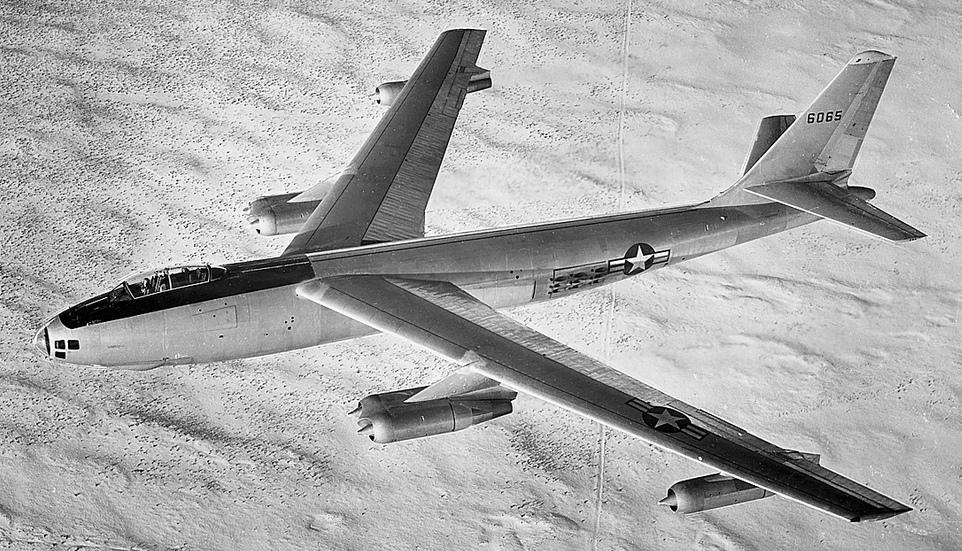
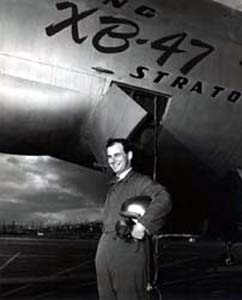
17 December 1947: Boeing test pilots Robert M. Robbins and Edward Scott Osler made the first flight of the Model 450, the XB-47 Stratojet prototype. It was a 52-minute flight from Boeing Field, Seattle, to Moses Lake Air Force Base, five miles north of the town of Moses Lake, Washington.
Robbins later said, “The best way to tell about the performance of the Stratojet is to say that any good crew could have flown it. It took no unusual ability or education. Neither Scott Osler nor I deserve any credit for the flight. Rather, the credit should go to the men who carried out these visions on the drafting boards and the factory workers who made the visions a reality.”
On 11 May 1949, during flight testing at Moses Lake, the canopy of 46-065 came off, killing test pilot Scott Osler. The co-pilot safely landed the airplane.
Designed as a strategic bomber, the B-47 could fly higher and faster than jet fighters of the time, and it was also highly maneuverable. The XB-47 (Boeing Model 450) was flown by a two-man crew in a tandem cockpit. It was 107 feet, 6 inches (32.766 meters) long with a wingspan of 116 feet (35.357 meters). The top of the vertical fin was 27 feet, 8 inches (8.433 meters) high. The wings were shoulder-mounted with the leading edges swept at 35°.
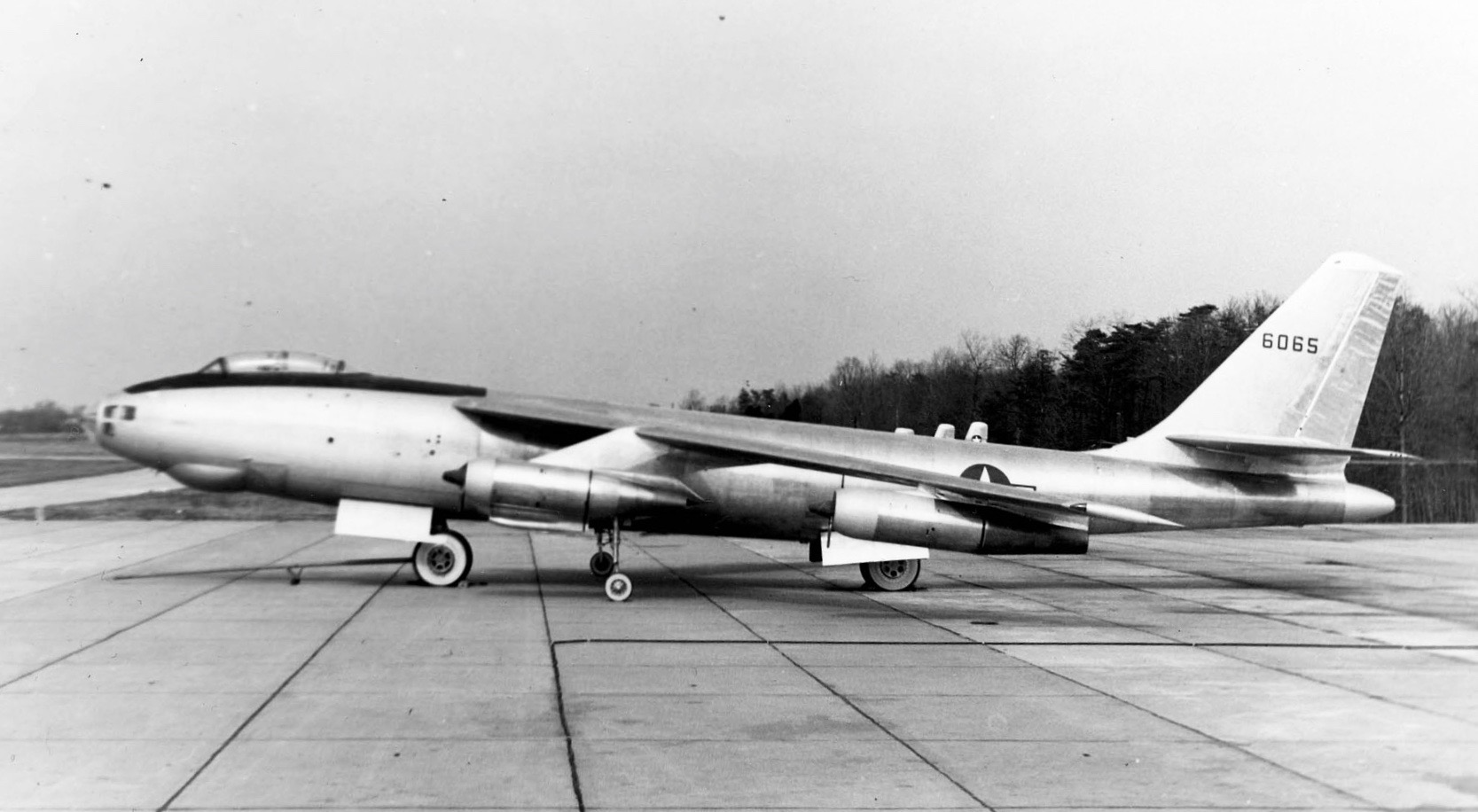
The first prototype, 46-065, was powered by six General Electric J35-GE-7 axial flow turbojet engines in four pods mounted on pylons below the wings. The J35 was a single-spool, axial-flow turbojet engine with an 11-stage compressor and single-stage turbine. The J35-GE-7 was rated at 3,750 pounds of thrust (16.68 kilonewtons) at 7,700 r.p.m. (static thrust, Sea Level). The engine was 14 feet, 0.0 inches (4.267 meters) long, 3 feet, 4.0 inches (1.016 meters) in diameter and weighed 2,400 pounds (1,089 kilograms). (The second prototype, 46-066, was completed with J47 engines. 46-065 was later retrofitted with these engines.)
The XB-47 prototype had a maximum speed of 502 knots (578 miles per hour/930 kilometers per hour/0.80 Mach) at 15,000 feet (4,572 meters). The combat speed was 462 knots (532 miles per hour/856 kilometers per hour/0.70 Mach) at 35,000 feet (10,668 meters). The prototype’s empty weight was 74,623 pounds (33,848 kilograms), while its maximum takeoff weight was 162,500 pounds (73,709 kilograms). It required a ground run of 11,900 feet (3,627 meters), or 4,800 feet (1,463 meters) with JATO assist. The bomber could climb at a rate of 3,650 feet per minute (18.5 meters per second) at Sea Level, at combat weight and maximum power. The service ceiling was 37,500 feet (11,430 meters). The XB-47 carried 9,957 gallons (37,691 liters) of fuel. The combat radius was 1,175 nautical miles (1,352 statute miles/2,176 kilometers) with a 10,000 pound (4,536 kilogram) bomb load.
Planned armament (though the XB-47s were delivered without it) consisted of two .50-caliber machine guns in a tail turret, with 1,200 rounds of ammunition, and 10,000 pounds (4,536 kilograms) of bombs.
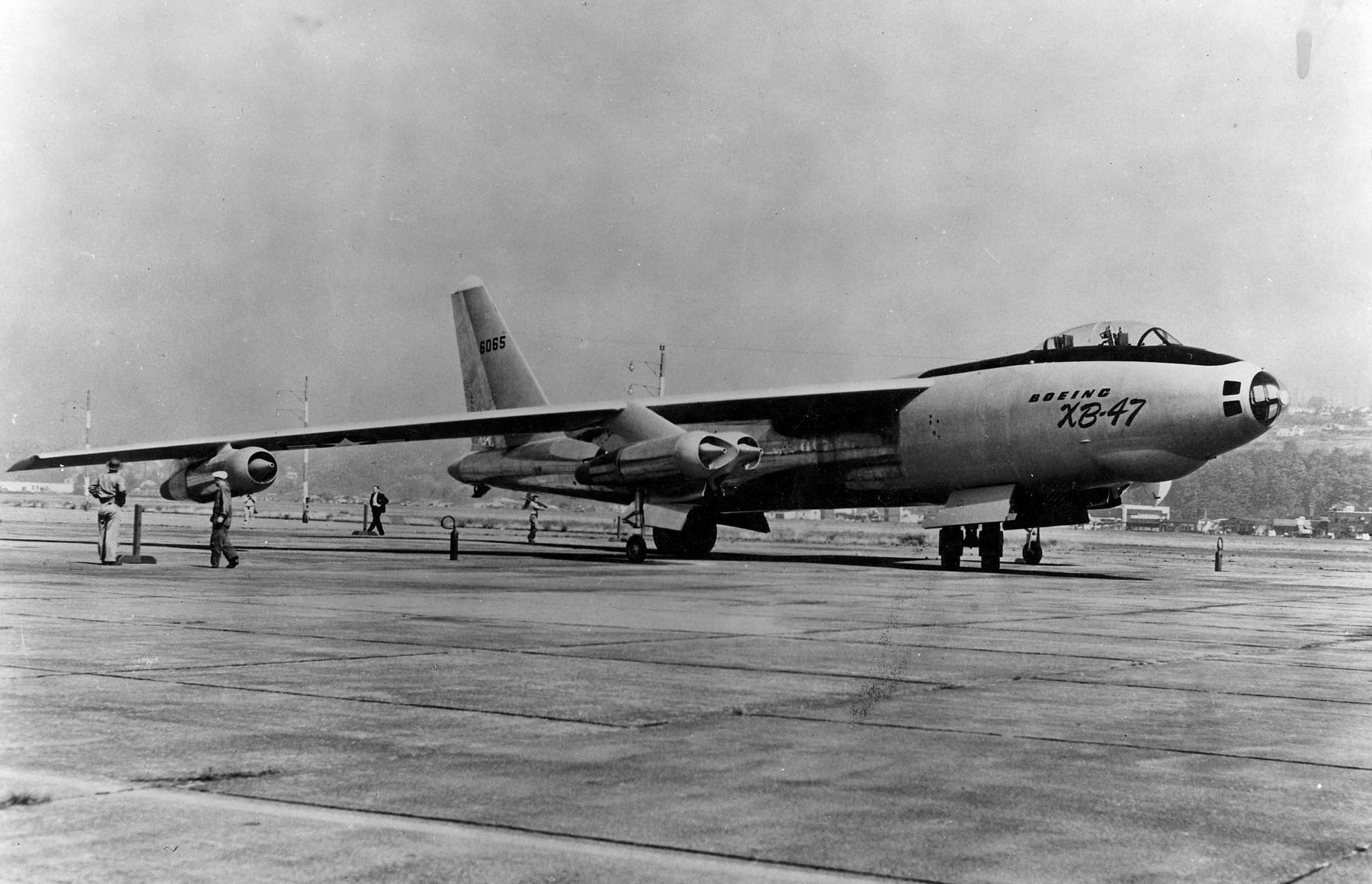
The Stratojet was one of the most influential aircraft designs of all time and its legacy can be seen in almost every jet airliner built since the 1950s: the swept wing with engines suspended on pylons, mounted forward of the leading edge.
2,032 B-47s were built by Boeing Wichita, Douglas Tulsa and Lockheed Marietta. They served the United States Air Force from 1951 to 1977.
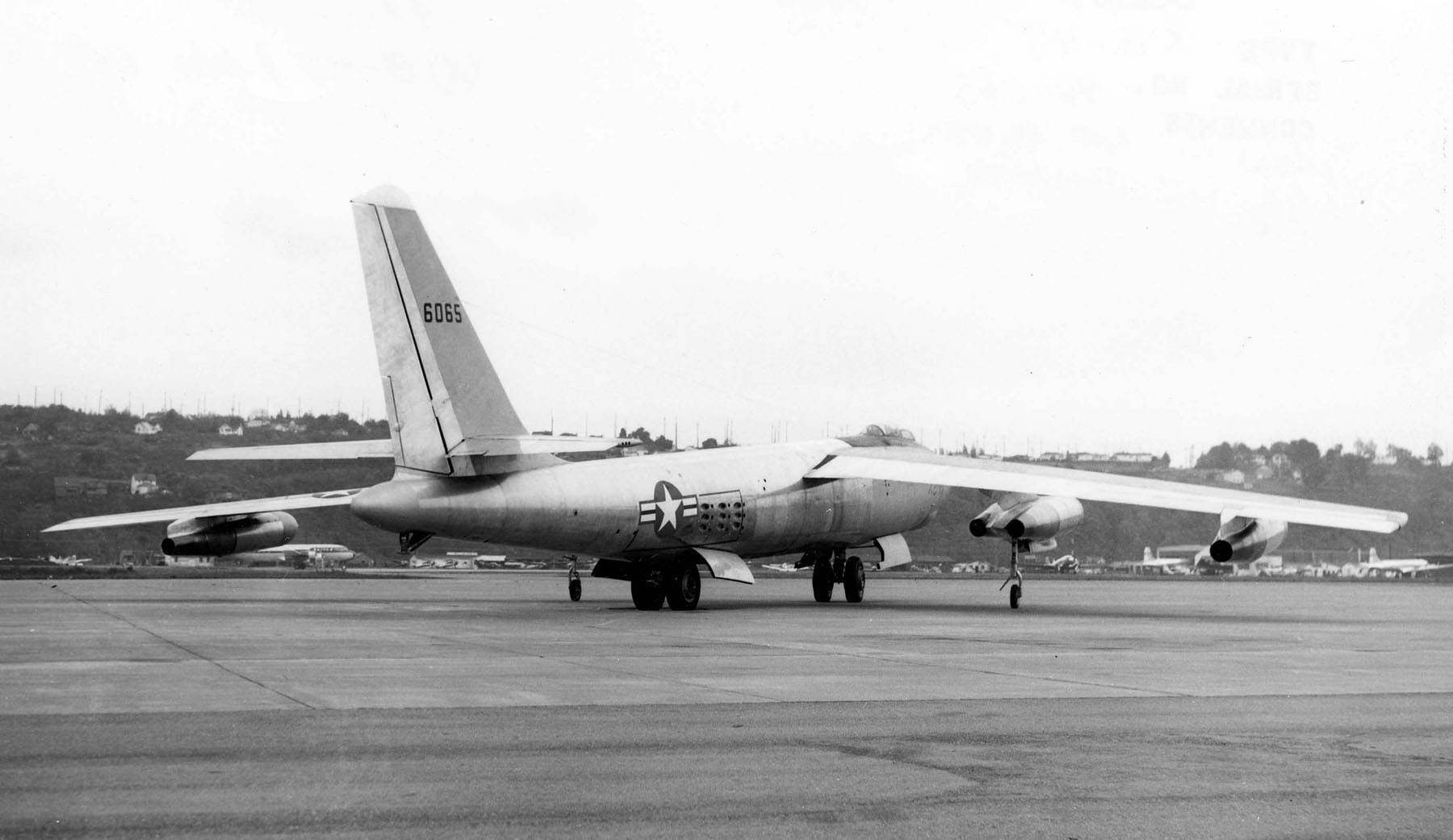
The very last B-47 flight took place 18 June 1986 when B-47E-25-DT, serial number 52-166, was flown from the Naval Air Weapons Center China Lake to Castle Air Force Base to be placed on static display.
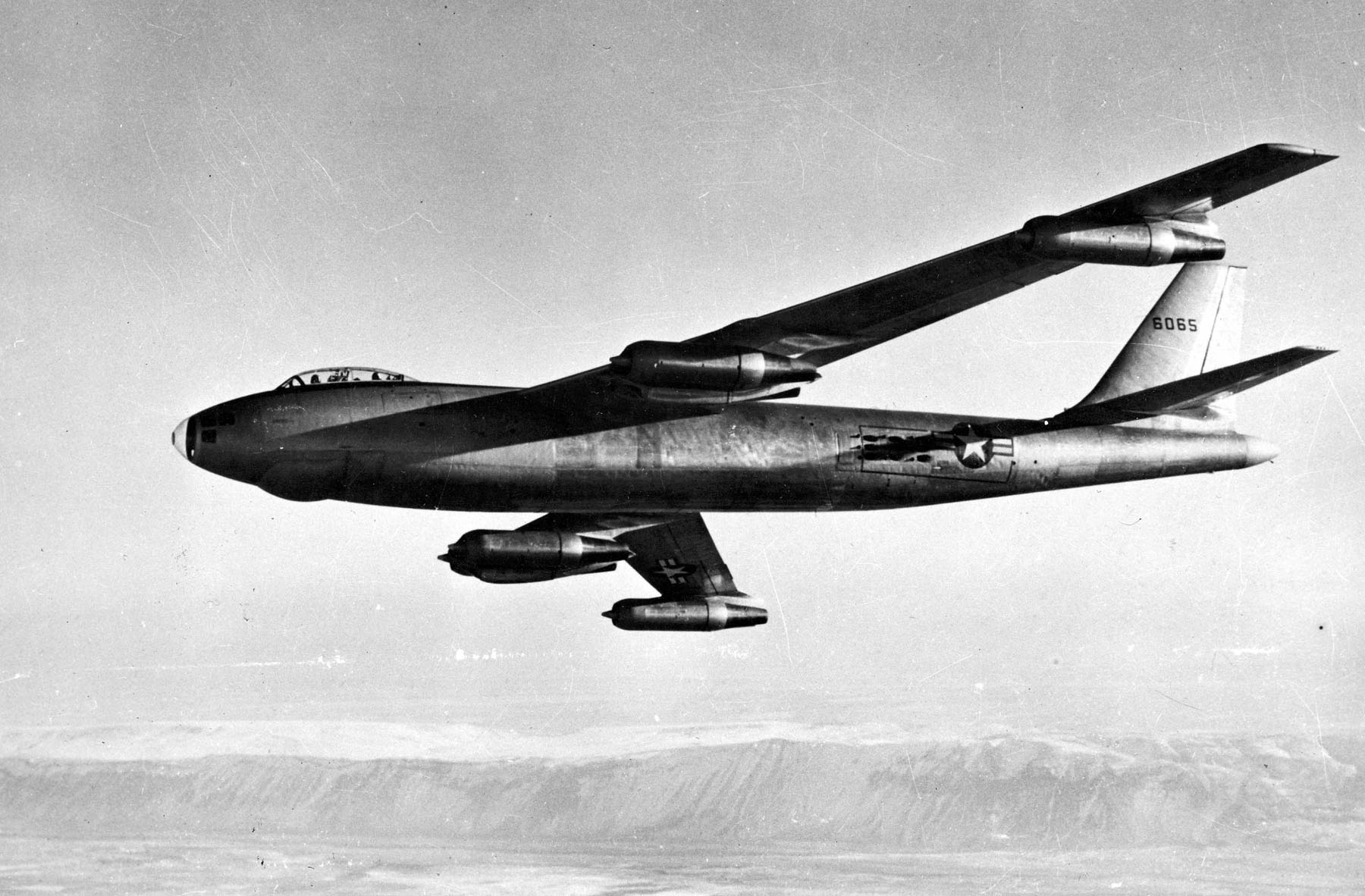
XB-47 45-065 stalled while landing at Larson Air Force Base, near Moses Lake, Washington, 18 August 1951. The crew of three escaped uninjured. The airplane suffered major structural damage. It was returned to Boeing at Seattle, Washington in 1953. The second prototype, XB-47 46-066, is in the collection of the Air Force Flight Test Museum, Edwards Air Force Base, California.
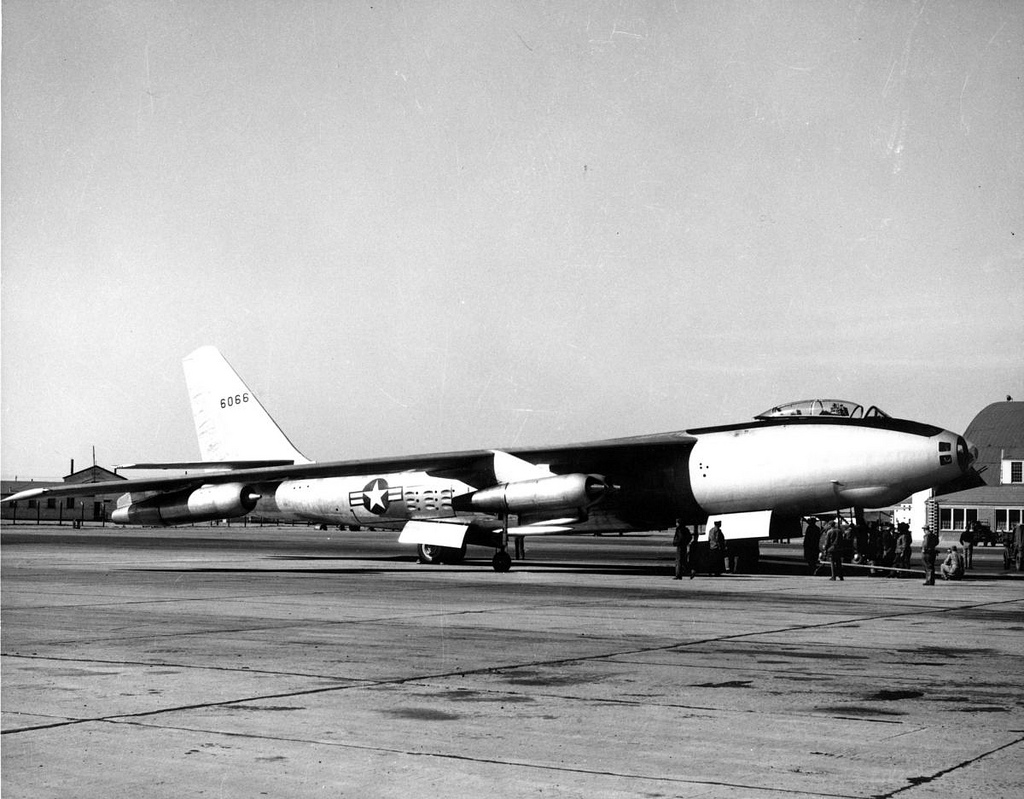
© 2017, Bryan R. Swopes